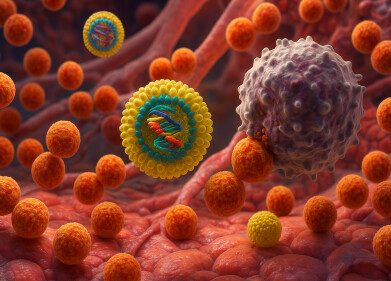News
Can Prosthetics Sense Touch?
Aug 28 2019
In a breakthrough development from the University of Utah, a team of biomedical engineers has created a prosthetic arm that could restore the sensation of touch to amputees. Powered by a myriad of electrodes implanted into the muscles and connected to the brain, the high-tech prosthetic prototype has already proved successful in human clinical tests.
Keven Walgamott, an amputee who lost his left hand to an electrical accident almost two decades ago, was one of the first patients to test the prosthetic. Thanks to the inclusion of bionic fingers that can be controlled by the brain, Walgamott was able to successfully pick up a raw egg without cracking the shell, as well as carry out other complex hand movements.
Introducing the Star Wars-inspired 'LUKE Arm'
The team was led by Gregory Clark, Biomedical Engineering Associate Professor at the University of Utah. He pioneered the development of the LUKE Arm, which is named after the robotic hand gifted to Luke Skywalker in Star Wars: The Empire Strikes Back. By implanting electrodes into the muscles of amputees, Clark and his team were able to send signals to the brain and recreate the way a human hand touches and feels objects.
"We changed the way we are sending that information to the brain so that it matches the human body," explains Jacob George, co-author of the study and biomedical engineering doctoral student at the University of Utah. "And by matching the human body, we were able to see improved benefits," he adds. "We're making more biologically realistic signals."
From Segways to bionics
The findings were published in the journal Science Robotics and explain how the University of Utah team modified a prosthetic metal arm created by DEKA Research & Development Corp, an American-based company founded by Segway inventor Dean Kamen. Using electrodes, the team was able to connect the arm to the nerves of the wearer and allow it to receive movement signals from the brain. To simulate the process, Clark's team developed a series of mathematical calculations and coupled them with impulses recorded from the arm of a primate. They then developed a model of how the human body sends and receives signal patterns, then integrated it into the LUKE Arm prototype.
"Just providing sensation is a big deal, but the way you send that information is also critically important, and if you make it more biologically realistic, the brain will understand it better and the performance of this sensation will also be better," says Clark.
For more insight into the latest scientific breakthroughs, including advances made at the Diamond Light Source national synchrotron facility in the UK, don't miss 'Accelerating innovation in virtually all fields of research.'
Digital Edition
Lab Asia Dec 2025
December 2025
Chromatography Articles- Cutting-edge sample preparation tools help laboratories to stay ahead of the curveMass Spectrometry & Spectroscopy Articles- Unlocking the complexity of metabolomics: Pushi...
View all digital editions
Events
Jan 21 2026 Tokyo, Japan
Jan 28 2026 Tokyo, Japan
Jan 29 2026 New Delhi, India
Feb 07 2026 Boston, MA, USA
Asia Pharma Expo/Asia Lab Expo
Feb 12 2026 Dhaka, Bangladesh



















